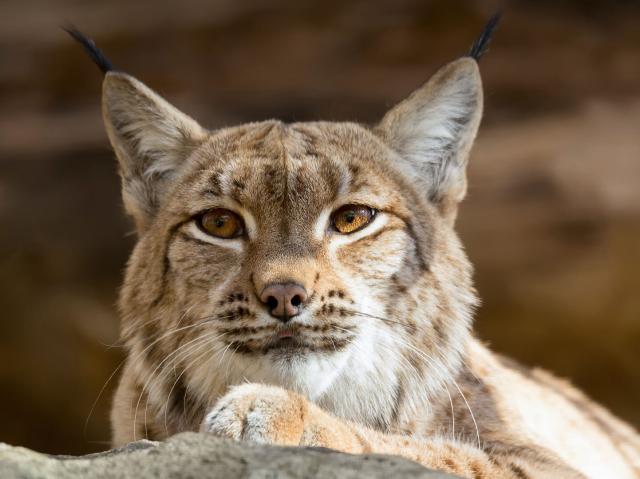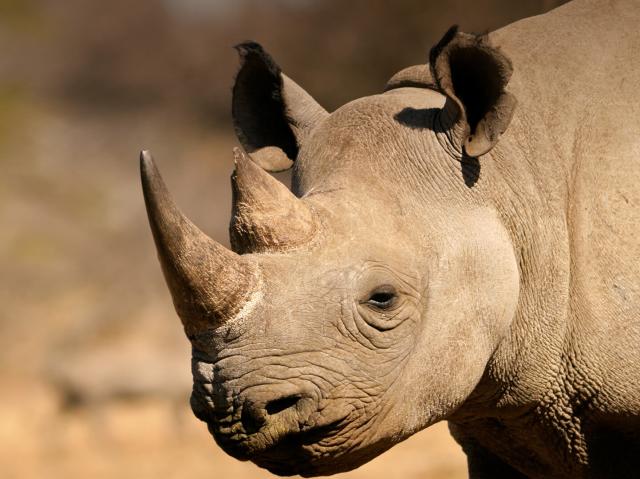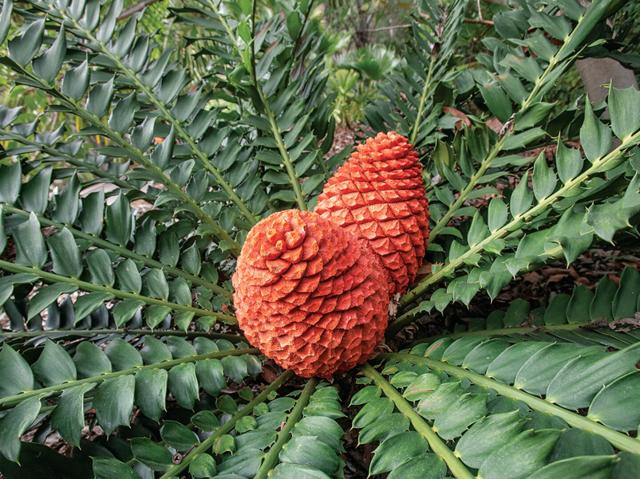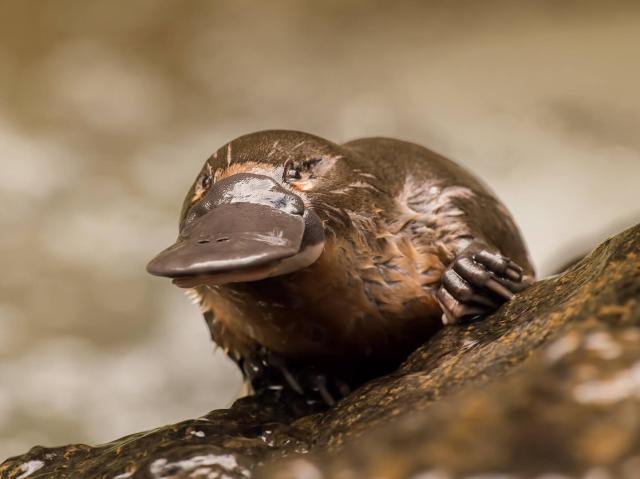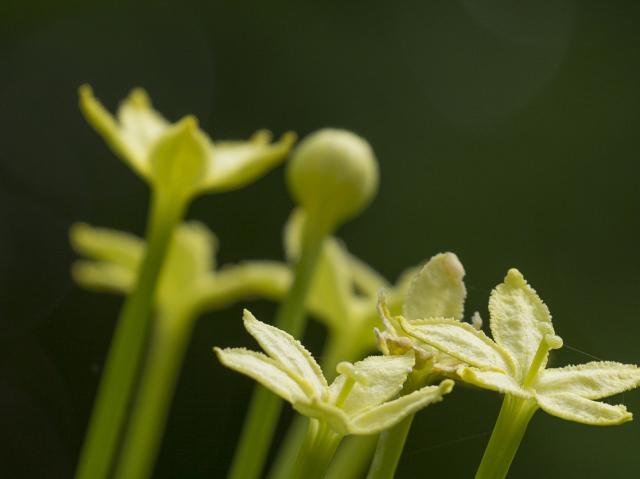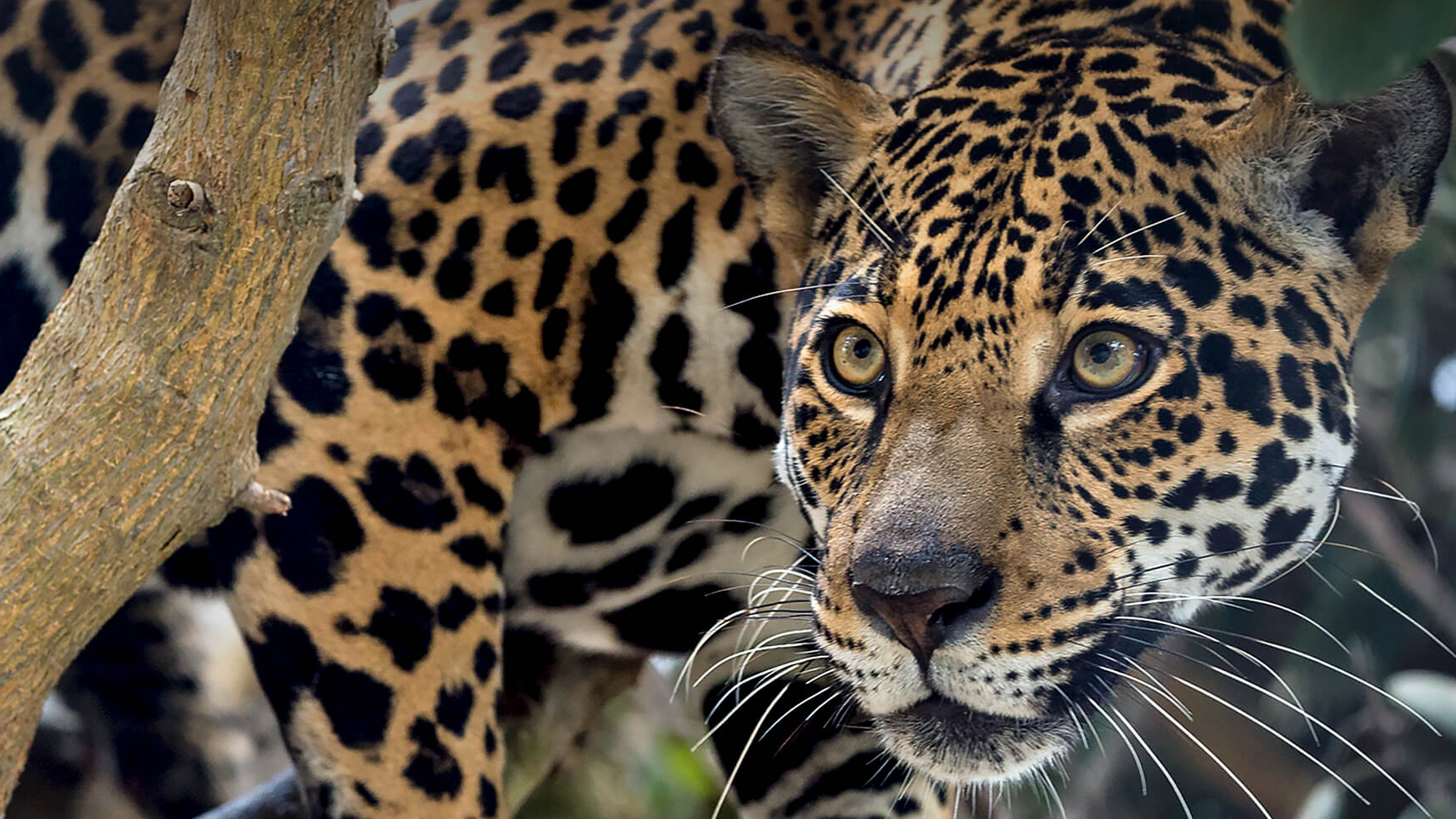
Jaguar

- CLASS: Mammalia (Mammals)
- ORDER: Carnivora
- FAMILY: Felidae
- GENUS: Panthera
- SPECIES: onca

ABOUT
Jaguars prowl the imagination: Sleek, powerful, and elusive, jaguars stalk the Americas and are revered by all who share their realm. Their mesmerizing gaze and hunting prowess have earned them a prominent place in mythology and legend. Their beauty, strength, and adaptability have earned them the respect of feline admirers around the world. Jaguars are some pretty cool cats.
As the only big cat species in the New World, jaguars have dominated the rituals and stories of the people who live there. Depictions of jaguars are found in ruins all along Mexico’s Yucatán Peninsula, where the jaguar was a chief figure in religious rites. Some tales say that jaguars can move between worlds, because they are at home both in the trees and on the ground, and they hunt both day and night. Today, the jaguar continues to be considered a symbol of royalty, intelligence, beauty, and strength.
Because their fur color and markings are similar, jaguars are often mistaken for leopards. And the likeness isn’t just skin deep—both cat species have similar habitats and roles in their ecosystems. The difference is that leopards hail from Africa and Asia, while jaguars are all American (North, Central, and South American, that is). Jaguars are also more heavily built and muscled than a leopard.
You can spot the difference, too: jaguars have dark spots on their backs, called rosettes, with an irregular broken border and often a spot in the center. Leopards also have dark rosettes on a tawny coat, but if you look closely at each rosette, you’ll see that there is no spot inside. The coloring of spotted cats helps them hide from their prey, breaking up their outline in forests or grasslands.
Most jaguars have tawny-colored fur with black rosettes, but some have black-on-black, or melanistic, coloration. Usually it is jaguars that are found in darker rainforest areas that are sometimes black. So, are they black panthers? “Panther” is a general term that comes from the Panthera animal group. The name sometimes used to describe leopards, jaguars, and mountain lions (also called cougars, or pumas).
HABITAT AND DIET
Jaguars are adapted for life in the tropical rainforest, with muscular limbs and large paws to climb trees, pad along the forest floor, and even swim in rivers and streams. They enjoy a good dip and are strong swimmers. In fact, they typically live near water and have a taste for aquatic creatures. They can survive in other habitats, too, from grasslands to deserts. Jaguars make their dens in caves, canyons, and even in the ruins of old buildings.
Like other cats, jaguars have eyes that are adapted for night hunting. One key element is a mirror-like structure called the tapetum lucidum, in the back of the eye, which reflects light back into the retina, nearly doubling the cat’s ability to see at night. If you have a pet cat or dog, you can see this eyeshine at night. Jaguars see less detail and color in daylight, but have better vision at night.
Jaguars stalk and ambush their ground-dwelling prey at night, instead of chasing prey like cheetahs and lions do. They can run pretty quickly, but this is not an important skill for jaguars. Their large jaw muscles allow them to kill their prey by piercing the skull with their sharp teeth. This enables them to eat spectacled caimans and hard-shelled reptiles like turtles and tortoises. Jaguars have been observed sitting quietly at the water’s edge, occasionally tapping the surface with their tail to attract fish. But most of a jaguar’s prey is larger. Jaguars are known to prey on more than 85 species, including peccaries, deer, tapirs, cattle, and capybaras.
At the San Diego Zoo, jaguars are fed a ground meat diet made for zoo carnivores, large bones, and an occasional thawed rabbit.
FAMILY LIFE
Solitary by nature, jaguars usually avoid each other. The cats leave claw marks and scent marks with their urine and feces as they roam their territory to let other jaguars know the area is “taken.”
Jaguars, lions, tigers, and leopards are the only big cats that can roar. They roar to scare off other jaguars, defend their territory, and attract a mate. A male jaguar’s roar sounds more like a bark, followed by a growl; a female produces a sound like a coughing roar. It is thought that roaring helps bring a male and female together for breeding.
A mother jaguar raises her cubs alone. One to four cubs are born with coarse, wooly fur and eyes closed, opening at 3 to 13 days. Their teeth appear by one month of age. By the time they are six to eight weeks old, cubs are able to follow their mother. They continue to nurse until they are five to six months old, although they eat meat caught by their mother. Male cubs grow more quickly than their female siblings, and by about two years old, they are about 50 percent heavier. The youngsters start to hunt on their own by 15 to 18 months of age, but continue to stay near their mother until they are about two years old, when they are ready to claim their own territory.
CONSERVATION
Jaguars are among the top predators in their habitat, so the adult cats don't have much to fear other than humans. The coats of jaguars have always been important to people who share their habitat. Unfortunately, the demand for jaguar skins spread to the outside world. Commercial fur hunting, especially in the 1960s, took a terrible toll on jaguars. The Convention on International Trade in Endangered Species (CITES) now outlaws the sale of jaguar skins internationally. Unfortunately, jaguar coats are still illegally bought and sold in countries where jaguars live.
Another problem for jaguars is loss of habitat. With less and less prey available to them, jaguars have started feeding on livestock. Ranchers often respond by trapping and poisoning them. Other threats to jaguars involve deforestation due to logging, mining, and farming, which breaks up their habitat into fragments, leaving less food and fewer mates. Estimates say that there are about 10,000 jaguars left in the American wilderness, but their numbers are decreasing rapidly.
To help the last of the American big cats, we first must find out more about where they live, how large their territories are, and how they spend their days and raise their young. Conservation scientists use trail cameras, which take a photo when something crosses in front of the camera, and place radio collars on some jaguars to track their daily movements. San Diego Zoo Wildlife Alliance partners with the Latin American conservationists to study, monitor, and protect jaguars, and we hope to decrease human-jaguar conflict.
By supporting San Diego Zoo Wildlife Alliance, you are our ally in saving and protecting wildlife around the globe.
LIFE SPAN
12 to 15 years in the wilderness; up to 20 years in zoos
YOUNG
Gestation: 3 to 3.5 months
Number of young at birth: 1 to 4; average is 2
Weight at birth: 1.5 to 2 pounds (700 to 900 grams)
SIZE
Length: 3.8 to 6 feet (1.1 to 1.8 meters)
Weight: 70 to 249 pounds (31 to 121 kilograms); males are larger than females; jaguars living in South America's Pantanal region are much larger
FUN FACTS
Jaguars are the largest cats in the Western Hemisphere and the third largest overall. Only lions and tigers are bigger.
Jaguars are completely at home in the water and are seldom far from a river or lake.
A jaguar may go "fishing" by waving its tail over the water to attract hungry fish.
The South American native word for jaguar, yaguara, means "animal that kills in a single bound."
Big cats like jaguars have the best 3-D vision of all carnivores, which helps them gauge distances when jumping.
Each jaguar’s spot pattern is unique—its own personal ID.




